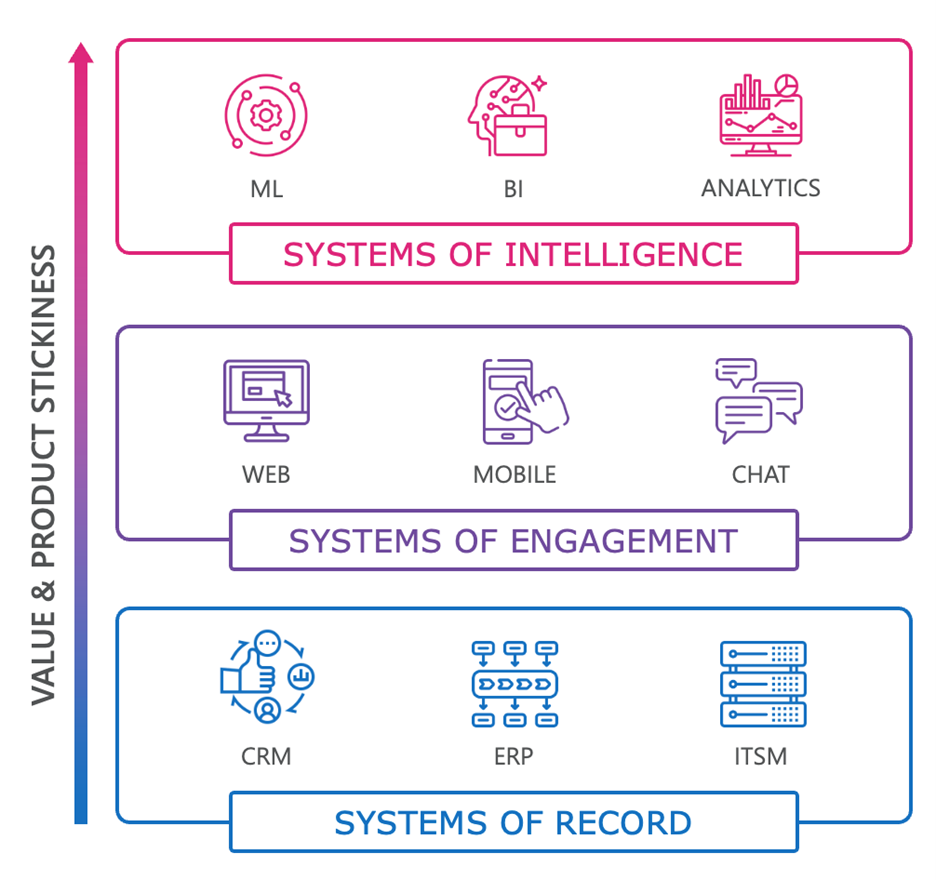It is about interacting more naturally with software
Last summer at the TSS leadership summit, I had a couple of slides on the practicality of using AI/ML in current projects, and I was saying the general AI (AGI) is still a couple of years away from us, so don’t really spend time and focus on that. Well, I wasn’t expecting to have to reconsider that statement at the beginning of this year. I believe it is still valid; I’m very much aligned with what David Deutsch thinks, that AGI is a very different beast than what currently natural language processing (NLP) technologies can deliver. However, the recent developments are nothing short of a small miracle. I did not expect to find such spectacular results in such a short time or to see the acceleration in competence between the span of two models from ChatGPT 3 to 4. I don’t think I am the only one amazed and surprised by the recent developments.
Will it affect VMS companies?
I believe VMS companies are going to be faced with quite some challenges and opportunities in the coming years. Just like the release of the first iPhone and iPad boosted the development of systems of engagement (solutions like mobile or web that allow users to engage with the software in their own environment), the new developments in AI/ML are going to boost the development of systems of intelligence (solutions that augment a user’s ability to make better or faster decisions).
Microsoft is racing out of the starting gates
Microsoft has been putting together a strong strategy for integrating all the new developments of OpenAI into their core products, and it is not just into Bing, their search engine to compete with Google, but almost all their office products, development products as well as low-code platforms: the Power Apps, AI Builder and OpenAI Copilot for Dynamics Apps. And they are doing this very rapidly.
The natural interaction flow
Part of it is about interacting more naturally with software. I believe as technology now allows a seamless interaction, there is a tendency to go towards a more natural way of interacting with computer systems. I believe a finger-based interface is more natural than a mouse-based one, hence the uptake of mobile applications. Voice is more potent than anything else (at least until the neural interfaces on which start-ups like Neuralink work will become practical). We had a first development with Siri and Alexa type of assistants, but those were lacking exactly the type of large language models that OpenAI and the rest are working on. With Whisper and ChatGPT, all of us can have a personal J.A.R.V.I.S., not just Iron Man.
Conversational interfaces
I see it in my own workflows, as I no longer reach for Google when searching for information; now, I go straight to Bing Chat or ChatGPT and ask. I like the conversational interface, I like that it has context, and I can refine and delve deeper into the answers, and I accept that, occasionally, the answers will not be correct as, as any assistant, it sometimes will just hallucinate.
And I foresee that this change in interaction will also be expected from VMS software, just like mobile-friendly versions are the norm today. I believe we are just at the beginning of this journey for software product companies, and I admit I don’t fully envision yet what these changes will be, but we can start by looking at how Microsoft is adjusting its software to add these new ways to interact as inspiration.
Insightful ways to interact with large quantities of data
However, there is another part to this evolution—the ability to interact with large quantities of data in new and insightful ways. Looking at the OpenAI APIs and their ability to process data, as well as the new functionalities built into tools like Excel and Google Spread, it becomes obvious that the way we interact with data is also going to change. The ability to transform questions in SQL queries, search, cluster, detect anomalies, measure diversity, and classify (see OpenAI Embeddings) pure data might mean that the role of traditional applications maintaining systems of records will become less important. I am wondering if, for traditional applications that do not extend their APIs to allow integrations with the LLMs, some external third-party provider can’t just mount a customer database and expose it to their own model, bypassing the application that manages the system of record completely. We often talk about Excel being, sometimes, the competition of a VMS product; I do believe that the future of Excel is a completely different kind of beast.
Fasten your seatbelt; there will be some turbulence
We are in the first moments of a big bang for systems of intelligence. I expect some turbulences as, probably, there will be rules and regulations creating a bit of chaos in the short term (see Italy’s ban on ChatGPT), but I don’t think any rational government will, in the long run, handicap their economies and their country ability to compete.
Also, some troubles are ahead from the perspective of ownership and IP. Who owns the IP for code created by the AI, and where is that code coming from? These are questions that do not yet, have good answers. What is clear is that everything you put in those APIs might be there in the upcoming training material and, as such, no matter how tempting it is to put some private code or data in there, regardless of the fact that it might not have a direct impact on your business right now, you are actually giving it away to OpenAI or other entities while it might not be yours to give. So, I fully understand our company’s concern that we should tread carefully and wisely when exploring opportunities.
At the beginning of a very formidable transformation
In conclusion, OpenAI’s developments are poised to transform the way we think about systems of intelligence, and software companies that embrace these technologies will be well-positioned to drive innovation and stay ahead of the curve. And for those looking to get started, a hackathon is an excellent way to explore the possibilities and test out the latest APIs.
Yonder Hackathon
This is the first time after the pandemic that we organize a company-wide, large hackathon on 12-13 May. During the hackathon, we bring developers, designers, and product owners together in a collaborative environment; hackathons can help companies rapidly prototype and develop new features and functionality that leverage the latest AI technology.
By Remus Pereni
CTO
Abbreviations:
AI – Artificial Intelligence
AGI – Artificial General Intelligence, click the link for more info.
David Deutsch – a British Physicist
J.A.R.V.I.S. – “Just A Really Very Intelligent System.” Perhaps fearing that having a sarcastic butler around would make Tony seem too much like Batman, the “Iron Man” filmmakers decided to make Jarvis into an A.I.
LLM – Large Language Model
ML – Machine Learning
NLP – Natural Language Processing
STAY TUNED
Subscribe to our newsletter today and get regular updates on customer cases, blog posts, best practices and events.












